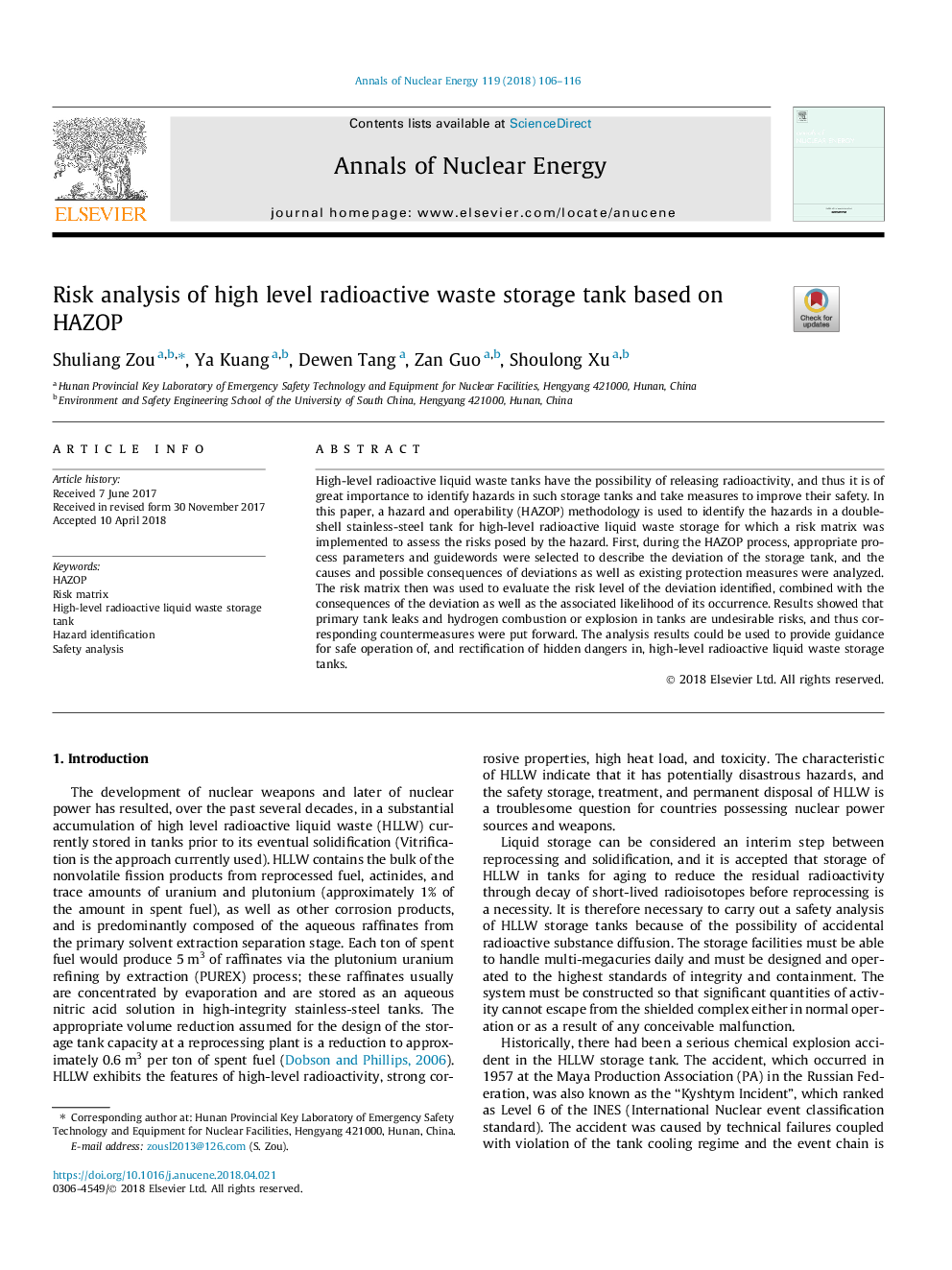| Article ID | Journal | Published Year | Pages | File Type |
|---|---|---|---|---|
| 8066910 | Annals of Nuclear Energy | 2018 | 11 Pages |
Abstract
High-level radioactive liquid waste tanks have the possibility of releasing radioactivity, and thus it is of great importance to identify hazards in such storage tanks and take measures to improve their safety. In this paper, a hazard and operability (HAZOP) methodology is used to identify the hazards in a double-shell stainless-steel tank for high-level radioactive liquid waste storage for which a risk matrix was implemented to assess the risks posed by the hazard. First, during the HAZOP process, appropriate process parameters and guidewords were selected to describe the deviation of the storage tank, and the causes and possible consequences of deviations as well as existing protection measures were analyzed. The risk matrix then was used to evaluate the risk level of the deviation identified, combined with the consequences of the deviation as well as the associated likelihood of its occurrence. Results showed that primary tank leaks and hydrogen combustion or explosion in tanks are undesirable risks, and thus corresponding countermeasures were put forward. The analysis results could be used to provide guidance for safe operation of, and rectification of hidden dangers in, high-level radioactive liquid waste storage tanks.
Related Topics
Physical Sciences and Engineering
Energy
Energy Engineering and Power Technology
Authors
Shuliang Zou, Ya Kuang, Dewen Tang, Zan Guo, Shoulong Xu,
